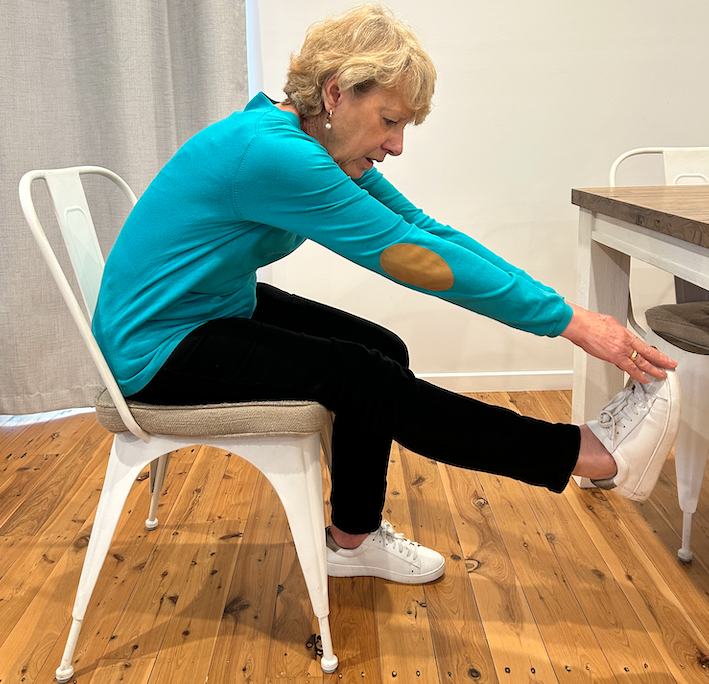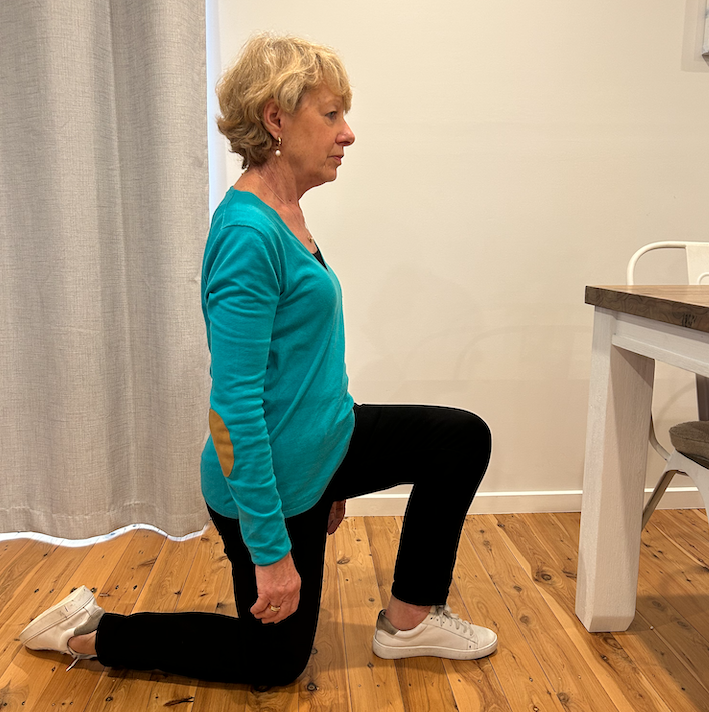Stretching the muscles in your body to maintain your flexibility is important for everyday tasks, especially as we get older.
Regular stretching allows you to remain supple in your joints and complete deeper movements when you exercise.
These deeper movements, in turn, allow muscles to be strengthened throughout their whole range.
Below we look at five reasons why being flexible is important and explore a few ways you can test your flexibility yourself!
5 reasons why being flexible is important?
- Pain – Muscles that remain in a short position for quite some time can develop pain. Imagine keeping your elbows bent for hours at a time. This shortened muscle position causes the muscles to become “cramped” and if it remains in this position over time, can cause the muscle to become short and tight and restrict movement. Working on flexibility encourages the muscles to lengthen and become less tight. This lengthening helps the muscles to relax, easing some types of pain and stiffness.
- Posture – Short muscles also make it harder for us to maintain upright postures. Poor posture can lead to pain, digestive issues, breathing challenges, headaches, and poor balance. Being nimble and flexible assists the body to maintain an upright posture.
- Strength & Balance – Having muscles and joints that are supple enables us to complete movements with greater ease and often means we can achieve more challenging positions in workouts. These challenging positions (i.e deeper squats) train our muscles at a higher level and therefore help build our strength and balance.
- Injury Prevention – Flexible muscles allow joints to move freely and without restrictions making them less prone to tears and injuries.
- Improved state of mind – Regular stretching eases tension in the muscles and allows them to relax. This relaxed feeling also carries over into our mental well-being as stretching has been shown to increase serotonin levels – the hormone that helps stabilize our mood, reduce stress, and overall makes us feel good!
Test Your Flexibility:
Here are a few quick and easy tests to do to see how flexible you are. These movements are designed to mirror everyday life.
Test 1: Sit and Reach

- Sit on the edge of a chair.
- Have one leg stretched out in front (knee straight) of you and the other knee bent.
- Lean forwards from hips to slide hands down your shin
Ideally, after a good warm-up, one can touch their toes. This tests the flexibility in the muscles at the back of your legs – mainly your hamstrings and calf muscles.
These muscles play a role in balance and preventing falls, walking and back pain management.
Test 2: Bending Forwards

- Start by sitting on a chair
- Have feet resting flat on the floor under your knees
- Lean forwards from the hips and reach for your ankles
This movement tests the flexibility of muscles around your hips and low back. Being flexible in these areas allows one to continue to tie shoelaces, and engage in self-care of their feet, toenails, and skin in the lower limbs (tasks which become harder to do as one becomes ‘stiff’).
Test 3: Kneeling on one knee

- Start by getting onto your knees
- Move one knee off the ground to place your foot flat on the ground so that you have only one knee kneeling on the ground.
This movement tests the flexibility in your hip, low back, buttock and back of leg muscles. Having the flexibility in these muscle groups allows one to bend over to tie shoelaces and engage in gardening tasks or get into low cupboards in the home.
Test 4: Hand Behind Back

- Place one hand behind your back (back of the hand against your back and the pal of the hand facing away from you) with the fingers pointing to the ceiling
- With your other hand overhead, reach downwards to touch the fingers of your other hand
This tests the flexibility of muscles in your shoulder and arm. Flexibility in your shoulder allows for reaching high shelves, combing, and washing hair and washing your back and dressing activities.
Give these movements a go and test your flexibility!
Have a chat with your physiotherapist if you’d like more tips on flexibility or assistance developing a stretching plan of your own: please contact our friendly team here at The Physio Co. We would love to help you on your health and fitness journey!
FURTHER READING:
- Five things seniors can do to help improve their upper limb flexibility
- The role of flexibility plays in a healthy life
- How to improve leg flexibility: 5 small things you can do today
- Flexibility for seniors: Can we regain it in our 80s?
Article written by Esther Ram, TPC physiotherapist

 1300 797 793
1300 797 793
